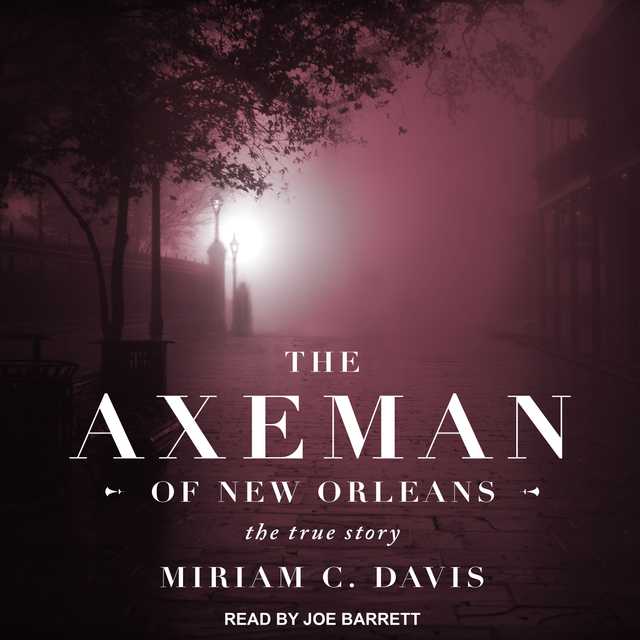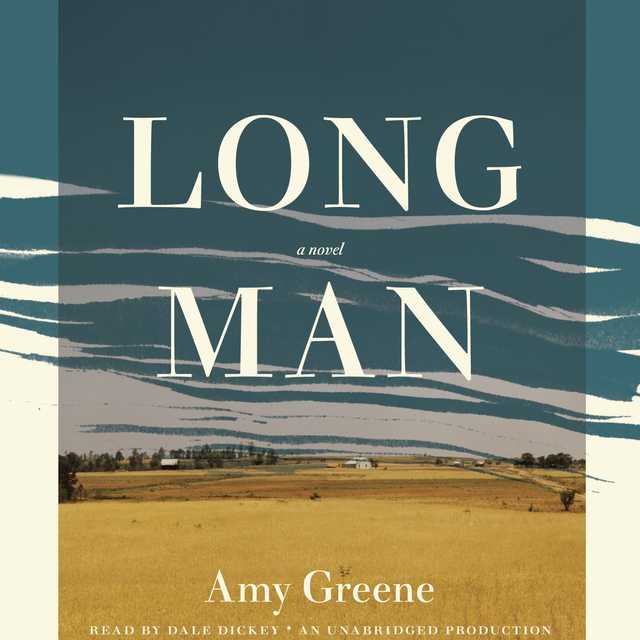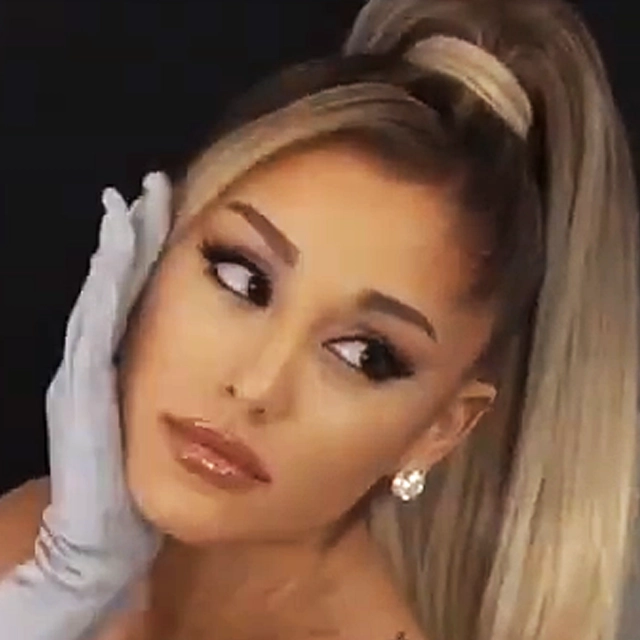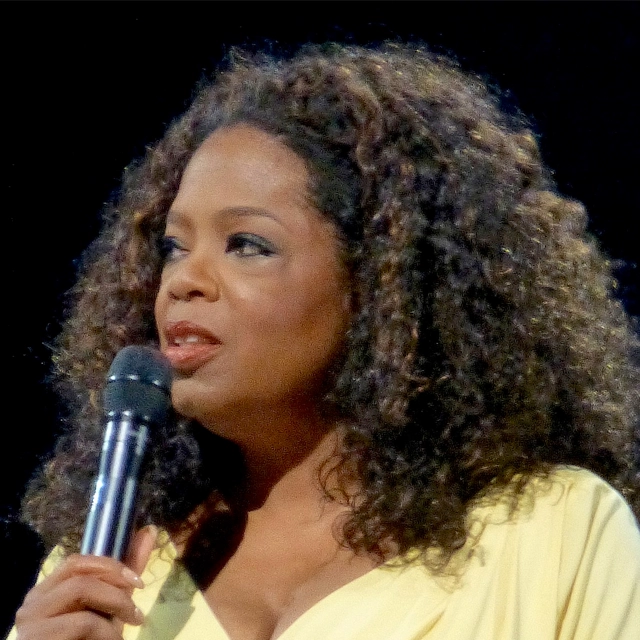Shock and Awe Audiobook Summary
From the acclaimed author of Rip It Up and Start Again and Retromania–“the foremost popular music critic of this era (Times Literary Supplement)–comes the definitive cultural history of glam and glitter rock, celebrating its outlandish fashion and outrageous stars, including David Bowie and Alice Cooper, and tracking its vibrant legacy in contemporary pop.
Spearheaded by David Bowie, Alice Cooper, T. Rex, and Roxy Music, glam rock reveled in artifice and spectacle. Reacting against the hairy, denim-clad rock bands of the late Sixties, glam was the first true teenage rampage of the new decade. In Shock and Awe, Simon Reynolds takes you on a wild cultural tour through the early Seventies, a period packed with glitzy costumes and alien make-up, thrilling music and larger-than-life personas.
Shock and Awe offers a fresh, in-depth look at the glam and glitter phenomenon, placing it the wider Seventies context of social upheaval and political disillusion. It explores how artists like Lou Reed, New York Dolls, and Queen broke with the hippie generation, celebrating illusion and artifice over truth and authenticity. Probing the genre’s major themes–stardom, androgyny, image, decadence, fandom, apocalypse–Reynolds tracks glam’s legacy as it unfolded in subsequent decades, from Eighties art-pop icons like Kate Bush through to twenty-first century idols of outrage such as Lady Gaga. Shock and Awe shows how the original glam artists’ obsessions with fame, extreme fashion, and theatrical excess continue to reverberate through contemporary pop culture.
Other Top Audiobooks
Shock and Awe Audiobook Narrator
Nicholas Camm is the narrator of Shock and Awe audiobook that was written by Simon Reynolds
Simon Reynolds started his journalistic career in 1986 as a staff writer for the British weekly music paper Melody Maker. His writing has appeared in the New York Times, Spin, Village Voice, Rolling Stone, Artforum, The Wire, The Guardian, Slate, Frieze and the Los Angeles Times. He is the author of four books and five collections of essays and interviews. His books have been translated into ten languages. Born in London, he now lives in Los Angeles with his wife and children.
About the Author(s) of Shock and Awe
Simon Reynolds is the author of Shock and Awe
More From the Same
- Publisher : HarperAudio
- Abraham
- American Gods [TV Tie-In]
- Dead Ringer
- House of Sand and Fog
- Prey
Shock and Awe Full Details
| Narrator | Nicholas Camm |
| Length | 23 hours 21 minutes |
| Author | Simon Reynolds |
| Publisher | HarperAudio |
| Release date | October 11, 2016 |
| ISBN | 9780062472083 |
Additional info
The publisher of the Shock and Awe is HarperAudio. The imprint is HarperAudio. It is supplied by HarperAudio. The ISBN-13 is 9780062472083.
Global Availability
This book is only available in the United States.
Goodreads Reviews
Tosh
February 06, 2017
Simon Reynold's "Shock and Awe is probably the 'over-all' best glam history book. Although he does leave out Perfume Genius who I think is the 'new' glam. And the other thing that struck me while reading the book is that he's not that crazy about the New York Dolls first album. But that is all in a manner of taste and subjective point of view, which makes this book a very enjoyable read. Reynolds has a critical ear and eye, which is good. The book is way over 600 pages which is a lot for a few moments in rock history. Still, the importance of glam rock cannot be understated in my world, and I presume for the rest of the planet as well. The major artists are covered here (except Perfume Genius, grrr) as well as the minor or cult musicians as well. Glam is the warped circus sideshow mirror of what was happening in the mainstream music world. The singer-songwriter from Laurel Canyon was still upon us during the glam era, and it's an interesting contrast looking back and see how both worlds dealt with each other. In fact, they didn't. The Eagles had a hatred for the show-biz aspect of rock (I.E. Alice Cooper, etc.) and I suspect the glam gang hated The Eagles. I hated The Eagles as well. So my loyalty is strong for the men who wore lipstick. For me, there is nothing new, but that is only because I'm an obsessed fan of the glam era. What I do suspect is that readers who are not familiar with this world will find Reynolds book a very inviting entrance to that planet. The bibliography in the back of the book is brilliant, but I'm surprised that there isn't a discography as well. Perhaps budget/printing issues, and this is a mega huge book.As a historian, I feel Reynolds captures Rodney's English Disco (pub) years accurately as I remembered it. He has a good sense of narrative drive for the reader to keep on reading this book. And his last chapter on Bowie's "Blackstar" album is a sad ending. Glam is very much part of the rock DNA, and I suspect that it will never go away - quietly.
Stefano
November 14, 2017
Simon Reynolds ha un difetto bellissimo: elabora una teoria, sintetizza una formula (per la gioia del "memificio" dei social), la fa diventare il polo magnetico su cui puntare la bussola, quindi parte come uno schiacciasassi in un escursus tutto inclinato verso il soddisfacimento e la solidificazione delle tesi che confermano appunto la teoria di fondo. Il rischio insomma era che questo ponderoso volume - oltre 600 pagine sul glam rock - diventasse un buco nero capace di divorare nella propria voragine tematica una trentina di anni di rock (e oltre). Ebbene, è andata quasi così. Ed è - appunto - bellissimo. Reynolds possiede le caratteristiche che ogni critico (o storico, come preferisce definirsi) del rock dovrebbe avere: una cultura vasta che sa spingersi ben oltre la bolla magica del rock e dintorni, un punto di vista assieme appassionato e disincantato, la capacità di mettere a fuoco e una penna agilissima. Caratteristiche che rendono divertente la lettura, e in quel divertente sono compresi l'intrigo, l'illuminazione, le perplessità, la delusione, la scoperta, un avventurarsi nel viluppo degli anni che si sviluppano come una successione di accadimenti, non necessariamente consequenziali ma ugualmente legati, e qui sta il lavoro dello storico, unire i puntini in modo da individuare linee di forza, abbozzare forme nel caos della Storia. Dal Regno Unito post-bellico che tenta di scrollarsi le macerie dalle spalle con lo skiffle e poi di inventarsi una realtà alternativa con la ricercatezza dei mods, si passa all'elaborazione pre-glam nel crogiolo hippie e quindi al coagulare di istanze teatrali, letterarie, cinematografiche e stilistiche che vedranno Bolan e Bowie protagonisti controversi ma assoluti. Una deflagrazione che sconvolgerà aspettative, forme e obiettivi, scoperchiando un vaso di Pandora genialoide e cialtrone, sempre comunque eccitante, così lontano così vicino a tutto quello che girava o girerà intorno, dal kraut alla wave al punk, per rovesciarsi su dark e new romantics. Un filo rosso meno musicale che estetico ed etico, uno stare sul palco come sulla parte più importante del vivere, vera chiave esistenziale che per qualcuno (vedi la parabola di un Brian Ferry) significherà reinventarsi completamente, riscattando le origini modeste col raggiungimento di una condizione in tutto e per tutto ideale. Rinascere, in pratica, come sogno di sé (anche quando tra sogno e incubo la differenza è, per così dire, labile). Una lettura che deve accompagnarsi - va da sé - con l'ascolto degli innumerevoli pezzi, album e artisti trattati, che siano Alice Cooper, Gary Glitter, Suzi Quattro, Mott The Hoople o gli Slade, per scoprire o rinfrescare la conoscenza di questa formidabile e scellerata corte dei miracoli. Non mancheranno le critiche, a cui un'opera di questo tipo non può sottrarsi: dal mio punto di vista spicca, ad esempio, la sostanziale assenza di riferimenti al movimento parallelo del power-pop, inoltre le pur ottime pagine che seguono Bowie e Eno nella trilogia berlinese sembrano a conti fatti esulare dal tema e rappresentare solo un trampolino per poter parlare degli strascichi glam successivi (nella new wave e nel new romantic), oppure per scrivere quel trattato su Bowie che Reynolds ha preferito evitare (ma non del tutto). In ogni caso, è una lettura essenziale per riflettere su cosa il rock è stato come impatto sul costume, sulla cultura, sul modo di pensare e vivere. Per capire i motivi e le meccaniche che lo hanno reso così importante. E, per contrasto, perché non sa esserlo più.
Jake
November 30, 2016
Glorious. Wonderfully rich in anecdote and below-the-radar material; always keeps the macro and the street in view; cerebral while mercifully sparing with the Great Unreadables / Sontag / academe. And as with the best social history, I came away with a ton of reading lists / playlists / YouTube videos / forgotten artefacts to chase down and addresses to make morbid pilgrimages to (including Mark Bolan's home). It all ultimately ends as an obituary to Bowie, a man who knocks the socks off them all and is now rising to well earned secular sainthood. Any weak spots? The year by year countdown of post-glam Glam influence trundles along somewhat (I had to fight the urge to just think 'Oh, fuck off Gaga - it's been done - you little prick', like a Boomer). But such was its impact. Surprises? Slade come across really excitingly - they were actually really credible and their draw was as a working class band. Elton John gets fuck all mention and rightly so, having done - what? Queen are a tight, professional operation. Mott the Hoople biting the Bowie hand that fed them cracks me up. Mark Bolan is incredibly likeable. Steve Harley & Cockney Rebel have other songs! There were gigs at Big Biba - the 'Rainbow Room', I think (Bowie? Roxy Someone big). And the Rainbow in Finsbury Park is never out of it (it's a fucking Pentecostal cult's megachurch now). The sleaze of the whole age too: we just saw the tip of a Yewtree iceberg. Noddy Holder and Alice Cooper's knicker obsession - to their 14 year old fans. Iggy's 14 year old girlfriend. The groupie scene. Splendid work. It's just very rich, really. What amazing fun it must have been.
alessandra
October 24, 2017
Perché amo Simon Reynolds? Perché un suo libro di musica non parla solo di musica. Perché scrive bene. Perché è appassionato e quindi ti fa appassionare. Perché alla fine sai molte più cose di quante credevi di poterne imparare leggendolo. Perché è uno dei più bravi critici musicali contemporanei. Leggo sempre i saggi di Simon Reynolds. Mi fanno ri-innamorare della musica, dei cantanti, delle canzoni, della storia del pop e del rock. In questo libro, "Shock and Awe. Glam Rock and Its Legacy" tradotto "Polvere di stelle", ogni capitolo è un'avventura. E Bowie passa come un fil rouge in mezzo a tutto il libro, ovviamente. E in più, la cosa bella di leggere saggi di musica in questo momento storico, è che ogni autore, ogni canzone, ogni filmato che lo scrittore cita, tu lo puoi vedere sul web, e tutto diventa un documentario. Live. Visto e letto nello stesso momento. Un bel saggio. Un bel libro sul glam. Ci voleva. Dont dream it. Be it.
Paul
February 19, 2017
Who needs to read over 650 pages about glam rock in the 1970s? I do, I guess. I liked this better than Rip it Up and Start Again, also by Reynolds, but then I'm more interested in the music/artists covered in Shock and Awe. The book is researched in great detail, and I stayed interested even during sections about the most obscure artists. David Bowie (appropriately) is the central player in the book, and Reynolds closes with a very touching epilogue about Bowie's later years and the last two albums he completed before he died.
Marti
June 05, 2022
This is an incredibly comprehensive analysis (650 pages of tiny print) of what constitutes "Glam." While largely a British phenomenon at the start (T-Rex, Sweet, Slade, Bowie, Gary Glitter, and the entire Bell Records oeuvre), it also included people like Alice Cooper, Wayne/Jayne County, Suzi Quatro, and the New York Dolls. The theory goes that Glam was primarily a reaction to the muddy jeans and beards aesthetic of the late 1960s, hearkening back to the "fun" days of 1950s rock and roll. The 1950s revival certainly was a huge part of the 1970s on both sides of the Atlantic.As the decade wore on, the style matured and morphed away from "fun" and became more enamored with royalty, luxury, elitism, and even Fascism (as exemplified by Bowie himself, along with Queen, Roxie Music, and lesser-known -- in America -- acts like Cockney Rebel). [And even later by Goth and "The New Romantics"]. And while there seems to be a direct line from Glam to Punk [Iggy Pop], the author sees them as largely antithetical to one another.On top of all this, there is a rather lengthy post-script which attempts to illustrate the glam influence in more contemporary acts like Lady Gaga and Nicky Minaj. I probably could have lived without that chapter, but gave food for thought. There were a lot of things described that I either never heard of, or had a completely different impression of (like confusing Cockney Rebel with the Cockney Rejects).
Surymae
November 18, 2017
Come un gigante dai piedi di argilla, il poderoso Polvere di stelle dopo centinaia di pagine colme di dettagli al limite della verbosità, adotta nella sua ultima sezione un taglio scheletrico che mina l'intero impianto del volume. Perché darsi la pena di affrontare l'argomento dell'influenza del glam nella musica dagli anni Ottanta in poi per poi dedicare pochissime righe - spesso non lusinghiere, come nel caso di Lady Gaga - agli artisti che hanno portato avanti questo cambiamento? Perché descrivere con minuziosità maniacale le gesta e le formazioni di ogni singola band glam rock, con il rischio fondato di creare confusione nel lettore, e sorvolare su quello che, sulla carta, era l'argomento principale della trattazione di Reynolds? Per quanto inoltre ami il periodo losangelino-berlinese di Bowie ammetto di essere stata perplessa dalla scelta dell'autore di includerlo nella sua disamina, visto che si tratta di musica che ha ben poco in comune con il glam, soprattutto perché i percorsi non-glam di altri artisti, come Lou Reed o i Roxy Music, vengono a malapena menzionati.L'impressione generale è quella di un libro poco coeso; un peccato, perché quando Simon Reynolds si concentra e mette a fuoco l'artista di cui intende occuparsi la lettura è assolutamente scorrevole e interessante. Ho inoltre apprezzato l'onestà intellettuale dell'autore nel mettere in luce anche gli aspetti più abietti dei protagonisti del glam rock, come gli abusi sessuali perpetrati da Gary Glitter nell'arco della sua carriera o la misoginia e l'omofobia presenti in alcuni testi. Di contro, ho alcuni dubbi sulla traduzione di Michele Piumini: il verso di una canzone che recita "Give us a kiss" viene reso con "Dammi un bacio" - perché cambiare il pronome? - in un'altra occasione l'evidente doppiosenso dell'espressione "Do you think that you could make it with Frankenstein?" si perde diventando "Pensi di potercela fare con Frankenstein?". Non sono traduzioni di per sè sbagliate, soltanto a mio parere un po' troppo slegate dai testi originali.Sembrerà paradossale, ma in realtà consiglierei la lettura di Polvere di stelle . Credo che, al netto delle occasionali prolissità, il libro di Reynolds possa offire molto al lettore, che sia l'appassionato del genere - e in particolare di Bowie, vero protagonista dell'opera - o al neofita che intende scoprire questa interessante pagina della musica rock (o sarebbe meglio dire pop?).
Malcolm
January 05, 2018
This book is a must for any Baby Boomer rock music fan & far exceeds expectations. While I loved glam era artists like Bowie, Eno, Roxy Music, Sparks, The Tubes, & early Alice Cooper others - Slade, The Sweet, Gary Glitter & Suzi Quatro, for instance - left me cold. But it doesn't matter! Reynolds tells all their stories & most are fascinating. He also contextualises each artist within his/her/their time & explores glam's influence on artists from punk to disco to grunge. Reynold's style is entertaining & his research is meticulous, often referencing esoteric tomes. And his love for his own favourites (eg/ Bowie) is beautifully documented. The book even concludes with something of a eulogy to the man who was, for me, the only true genius of rock music. Most highly recommended.
Bob
March 15, 2022
Fans of David Bowie and theatrical rock & pop will find much to like and learn in Simon Reynolds' "Shock and Awe." Since the author is British and grew up with glam, Americans especially should discover some new things to hear and contemplate in this book. I certainly did, and I'm a bit of an Anglophile music geek. Some chapters go off on tangents and the 21st century is represented in quick paragraphs of notable events, but overall it is a great read.
Christopher
March 17, 2017
Maybe ***1/2.... Fantastically well-researched and mostly well-written, but perhaps too uniformly music-journalistic and short-burst snappy for such an extensive and ambitious study, or too indecisive and/or shallow in a way I can't quite put my finger on. It certainly works as a good complement to Rob Sheffield's Bowie book in that Sheffield missed the boat on THE MAN WHO FELL TO EARTH but got it right on STATION TO STATION, but vice versa for Reynolds.
Steven
September 19, 2019
He's fascinating to read. I was hesitant at first because I know a lot about this era and he pays Bowie more heed than I usually like on books, movies, etc. on Glam, yet his force of personality put through in language makes it worthwhile...you can disagree with him (as I did a lot on a book called Bowie in Berlin...the author of that book's subjective opinions began to piss me off...wherein he paid short shrift to Lust for Life and Lodger, Iggy and Bowie respectively, and TVC_15 as being a throw away and I thought to myself, you don't have the force or personality to make me take you seriously), yet I take Mr. Reynolds seriously. Read, even if you're an expert (or think you are)
Dante
February 10, 2023
Reynolds se propone hacer dos cosas en este libro: una analítica del glam, un estudio de lo que el glam es, sus características esenciales, su programa; y una historia del género, una presentación de sus exponentes, su contexto, su evolución. Son las dos formas principales de concebir la música: la que se detiene en su inmanencia, su realidad-en-sí, y la que piensa sus condiciones de producción, circulación y recepción. Reynolds hace las dos cosas de una forma brillante, y lo mejor es que las hace al mismo tiempo.A lo largo de 700 páginas, Como un golpe de rayo empieza por Bolan y T-Rex, y pasa por Alice Cooper, The New York Dolls, Queen, Slade, Mott The Hopple y miles de otros artistas y bandas que definieron el glam y el glitter. Es un recorrido por los años setenta, y tiene un protagonista tácito: David Bowie. El orden no es solo cronológico, si bien esta es la guía general, sino que se detiene también en la geografía (el origen británico del glam y su recepción en EEUU), las vertientes internas, el vínculo con otros géneros como el mod rock, el punk, el R&B, el disco y eventualmente el post punk, el new wave y el goth rock.A la vez, Reynolds se pregunta qué es efectivamente el glam: cómo funciona su tesis de que en la falsedad se encuentra una verdad más real que en la honestidad, cómo se vincula con el dandismo y su estética del exceso, cómo hace revivir el barroco en pleno siglo XX. El análisis es poderoso, convincente, y el autor es particularmente bueno transmitiendo su pasión por el tema estudiado sin dejar que esto invalide su mirada crítica.El libro tiene 700 páginas. Esto es, por un lado, una precondición necesaria para contar la historia completa de un género, especialmente uno tan complejo e influyente como el glam. Parte de esto está conformado por el último capítulo, una serie de anotaciones cronológicas desde 1975 hasta la muerte de Bowie, que retratan la evolución del género luego del apogeo descrito en los apartados anteriores. Es un agregado que solo un erudito de la talla de Reynolds podría hacer, y se aprecia ampliamente. No se puede dejar de remarcar que resulta una lectura accesible incluso para personas que no estén íntimamente familiarizadas con el tema (aunque no lo recomendaría como punto de entrada: es casi una enciclopedia, y la música debería escucharse antes de leerse).Pero, al mismo tiempo el libro tiene 700 páginas . No se hace pesado, porque (de nuevo) la escritura de Reynolds es atrapante, pero incluso para un lector amante del género como yo se vuelve una lectura extensa, demasiado extensa. En más de un momento me pregunté si era efectivamente necesario dedicar tantos párrafos a bandas y proyectos que el mismo autor admite que no han sido particularmente relevantes. O, en el sentido opuesto, si tiene sentido incluir al Bowie post Low, que ha abandonado el glam casi en su totalidad. En algunas páginas, parece que la bowiemanía ha afectado a Reynolds, que no puede dejar de hablar de David (y no lo culpo). La cuestión de la extensión no es particularmente grave, pero sí hace que esta reseña no sea de 5 estrellas sino de 4: I'm a blackstar...En resumen: lectura imprescindible para fans del glam, muy interesante para personas que disfruten de los años 70, pero tal vez demasiado minucioso para lectorxs más ocasionales.
Eric
September 14, 2022
This was another book that led me to jot down lots of notes in my phone -- bands, movies, etc., with which I was unfamiliar, but that I felt like I needed to check out.Simon Reynolds's history of glam rock (I'd say if it's not the most comprehensive ever compiled in a single book, it's definitely close to it) starts and ends with David Bowie. After all, the former David Jones kind of kicked off glam rock as he departed from the sounds of the late '60s, alternately bluesy, stripped-down, psychedelic, natural, and honest, and instead went in a direction that celebrated style as much as or more than substance, image over musicianship, and glitz over grit.From Bowie he heads on through Marc Bolan and T. Rex, Slade, Alice Cooper, The Sweet, Iggy Pop, Mott the Hoople, Gary Glitter, New York Dolls and dozens of others along the way. In some cases the musician is only barely related to glam, but they're still associated with the musical/showmanship movement. He also checks in pretty frequently on Bowie, since anyone who paid any attention to his career knows that he completely reinvented himself every few years, adopting a new persona, a different musical style, and in some cases even a changed worldview. As he develops his timeline, Reynolds makes a pretty compelling case that Bowie was never quite sure exactly what he was, because he was something different every time he turned around. For many, he was the overarching symbol of glam, but his influence perhaps affected the movement more than anything he did himself.The first several chapters are in-depth retellings of the major stories of the glam era, going through most of the 1970s and even playing a part in shaping punk rock and disco. As Reynolds winds down, he switches over to an actual timeline-based structure, taking each year and each month to give the highlights that relate to glam, all the way up through the 2010s. I'm not sure about you, but I certainly didn't make the connections between glam and later musicians and musical genres that Reynolds makes, but I'm a believer now.If you're not into glam rock, this book MIGHT not be for you. Then again, it might. Reynolds has a way of taking what was really a fairly brief period in popular music, fleshing it out, relating it to what came before, what came after, and what was happening simultaneously. At its conclusion, it's hard to deny that "Shock and Awe" gives the reader a glimpse into how even a minor musical movement can relate to popular culture in general. It's a little lengthy, but it's absolutely worth the read.
David
August 26, 2022
A very enjoyable, quirky and authorative look at Glam Rock, focussing on the key artists of the movement. In fact, the chapters on each band are concise but pithy biographies which, unless you are a committed fan, will probably give you as much background as you need on the likes of Alice Cooper, Sweet, Sparks and Mott the Hoople, while also perhaps inspiring you to learn more and explore their music further. Conversely, Reynolds gives you much more information than you will ever need about Glam outliers such as Wayne County, The Cockettes and the Tubes, though even these sections are trashy and gossipy fun. Bowie is central to the book - I have read a review which suggested that this is basically a Bowie biog by stealth but I think that DB's influence on Glam in particular and 70s music in general (and beyond) merits such an approach. The later chapters slip in focus and quality as we follow Bowie and his fellow travellers beyond 1976 (when Glam as a genre was pretty much at an end). As interesting as the sections on Bowie's Berlin Trilogy and Kraftwerk are, do they really belong in a book about Glam Rock? Reynolds may argue that they do, given that he goes on to show the lasting influence of the genre on later artists in the final chapter - much as Rob Chapman does for British folk in his book Electric Eden. However, though this works for artists such as Siouxsie Sioux, Kate Bush, Japan, Adam Ant, Bauhaus, the New Romantic bands and even Prince, Morrissey, Suede and Marilyn Manson, it becomes strained when Reynolds begins to dwell on the likes of Lady Gaga, Kanye West, Beyonce, Drake and Sia. While these latter artists play with notions of masks, role-playing, artificiality and self-invention/re-invention, which was very much part of the Glam aesthetic, they have no artistic or musical link to the genre, whereas the likes of Kate Bush, Morrissey and Suede do have such a link, while combining this and other influences with their own distinctive artistic impulses. Glam is, after all, more than just dressing up, putiing on make-up and pretending to be an alien (or indeed a rock/pop star). That said, despite losing its grasp somehwt towards the end, this is an extremely entertaining read and probably the best overview on Glam Rock currently available.
Clare
December 04, 2016
I have to admit that I did go into this book with some preconceived ideas about it. I thought it'd be 90% Slade, Sweet and T-Rex but thinking that this was a bit of a gap in my musical knowledge, dove straight in. Shock and Awe, to my delight, has turned out to be so much more. Simon Reynolds is a hugely skilled writer, his fantastic Energy Flash which covers rave music remains a favourite of mine and his research is second to none. David Bowie looms as large over this book as he does over much of modern music. Reynolds thoroughly covers his early years as Bowie searches for a style that'll stick and then struggles with the pressure of keeping up various characters while grappling with a huge drug problem. There's a touching tribute to Bowie towards the end, the author hearing of his death just as he was finishing up this book. The end section is a fascinating read, the influence of glam rock is still present today in artists such as Lady Gaga and to some degree, even Kanye West. There's a great chapter on Marc Bolan, he was quite the storyteller in his interviews, often exaggerating real events in order to make himself appear more interesting and the reader is left wondering that if it were not for his death, would he be such an iconic figure today. Shock and Awe is full of little delights and mentions that'll send you running to seek out bands and have you making your own playlist to accompany your read. A fantastic book from an excellent writer.I received a free ARC from Netgalley in exchange for a fair review.
Brianna
May 28, 2020
Music history is my favorite and most frequented book genre, and Shock and Awe embodies exactly what I think that genre should be. The substance is well-rounded and almost exhaustive in some sections. The style is easy and glamorous in its own right. This book could have been incredibly dry, but despite the technical depth Reynolds achieves with his research, his tone is fluid and sometimes even funny. Is it a little long? Yes. But it should be--it spans half a century. It took me over a year to read, picking at it piece-by-piece. Some of its heft comes from ventures into non-musical cultural phenomena (the most frequent being drag) and these forays were often my favorite parts. These pieces were the glue that kept the book from being just a long list of glam rock acts. I imagine Reynolds expected the book to be read disjointedly, and as a result may reiterate the central themes a little more than necessary. Otherwise, he seems to have a great sense of balance, whether that's between scholarly and vernacular writing, or space shared by the various styles, performers and critics. The one criticism I've seen the most in reviews is "too much Bowie," and I don't think I agree. If anything, Bowie was the thread the book needed to create a unified narrative to carry the reader through decades of novelty.
Jake
June 25, 2022
Very long, very comprehensive history of glam rock and adjacent genres in the 70s. Largely British bands, most of whom were enormous in the British Isles but quite few of whom found large scale success in the US. Even some of the American bands discussed (Stooges, New York Dolls, Velvet Underground) were bigger in England than they were stateside, at least outside of New York City - the only exception I can recall is Alice Cooper but I may be forgetting someone, like I said the book is long.Simon Reynolds is a superior writer and he weaves a lot of cultural and historical context into discussions of artists and their material - at first this is almost jarring, and difficult to get accustomed to (early on you may be asking yourself what J.R.R. Tolkien and C.S. Lewis have to do with T. Rex and whether it's important enough to go into in depth) but once you start to understand how he's working it's a thrill to read.Because of this book I've discovered, and re-discovered, numerous bands that I'm getting into now, many I'd heard mentioned numerous times but never listened to, like BeBop Deluxe, Cockney Rebel - I had never even really done a deep dive into Roxy Music.This year I've read quite a bit of excellent music writing - still, this book stands out as exceptional. I will definitely put his other books on my list.
Seth D
August 01, 2018
Engaging, incredibly well-researched, slightly exhausting history of 70's glam rock, focusing on David Bowie but reaching broadly across a wide variety of canonical, popular-but-forgotten, brilliant-but-obscure and just-plain-weird artists. Some in-depth single artist pieces, some rambling surveys of scenes and trends, lots of allusions to the art, politics, culture and other musical trends that shaped glam. Reynolds is deeply knowledgable and opinionated. He's also incredibly frank about the fact that a lot of the music is mediocre and a lot of the people are simply awful - the extent to which these artists exploit the teenage women in their fanbase is shocking and Reynolds sharply critiques it. Still, a very good read, if a little too sprawling at times.
Carol
January 02, 2017
A great chronological view of glam rock, including various stops to think about the term, its origins, its practitioners, and what the audience was experiencing as well. Reynolds wrote one of my other favorite books on music, Rip it Up and Start Again about post-punk, and he is one of the few music writers that strikes the correct balance between balls-out boy fandom and ponderous self-importance. Reynolds is able to weave together both enough technical information about how the music was made and colorful analysis of the visual aspects of glam. More color photos would have been great, but there is only so much one book can do!
Most Popular Audiobooks
Frequently asked questions
Listening to audiobooks not only easy, it is also very convenient. You can listen to audiobooks on almost every device. From your laptop to your smart phone or even a smart speaker like Apple HomePod or even Alexa. Here’s how you can get started listening to audiobooks.
- 1. Download your favorite audiobook app such as Speechify.
- 2. Sign up for an account.
- 3. Browse the library for the best audiobooks and select the first one for free
- 4. Download the audiobook file to your device
- 5. Open the Speechify audiobook app and select the audiobook you want to listen to.
- 6. Adjust the playback speed and other settings to your preference.
- 7. Press play and enjoy!
While you can listen to the bestsellers on almost any device, and preferences may vary, generally smart phones are offer the most convenience factor. You could be working out, grocery shopping, or even watching your dog in the dog park on a Saturday morning.
However, most audiobook apps work across multiple devices so you can pick up that riveting new Stephen King book you started at the dog park, back on your laptop when you get back home.
Speechify is one of the best apps for audiobooks. The pricing structure is the most competitive in the market and the app is easy to use. It features the best sellers and award winning authors. Listen to your favorite books or discover new ones and listen to real voice actors read to you. Getting started is easy, the first book is free.
Research showcasing the brain health benefits of reading on a regular basis is wide-ranging and undeniable. However, research comparing the benefits of reading vs listening is much more sparse. According to professor of psychology and author Dr. Kristen Willeumier, though, there is good reason to believe that the reading experience provided by audiobooks offers many of the same brain benefits as reading a physical book.
Audiobooks are recordings of books that are read aloud by a professional voice actor. The recordings are typically available for purchase and download in digital formats such as MP3, WMA, or AAC. They can also be streamed from online services like Speechify, Audible, AppleBooks, or Spotify.
You simply download the app onto your smart phone, create your account, and in Speechify, you can choose your first book, from our vast library of best-sellers and classics, to read for free.
Audiobooks, like real books can add up over time. Here’s where you can listen to audiobooks for free. Speechify let’s you read your first best seller for free. Apart from that, we have a vast selection of free audiobooks that you can enjoy. Get the same rich experience no matter if the book was free or not.
It depends. Yes, there are free audiobooks and paid audiobooks. Speechify offers a blend of both!
It varies. The easiest way depends on a few things. The app and service you use, which device, and platform. Speechify is the easiest way to listen to audiobooks. Downloading the app is quick. It is not a large app and does not eat up space on your iPhone or Android device.
Listening to audiobooks on your smart phone, with Speechify, is the easiest way to listen to audiobooks.






























